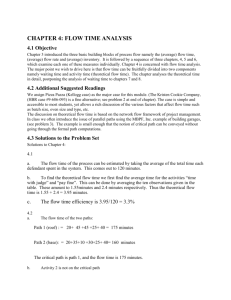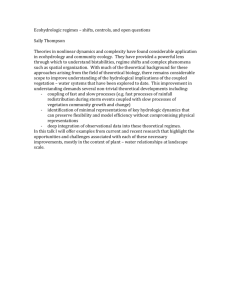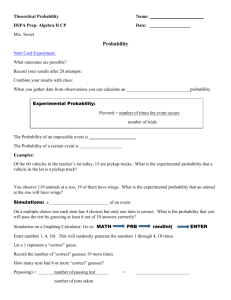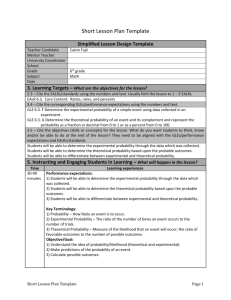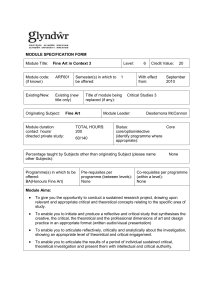CCII Functions and Function Notation Day 3 Name #______
advertisement
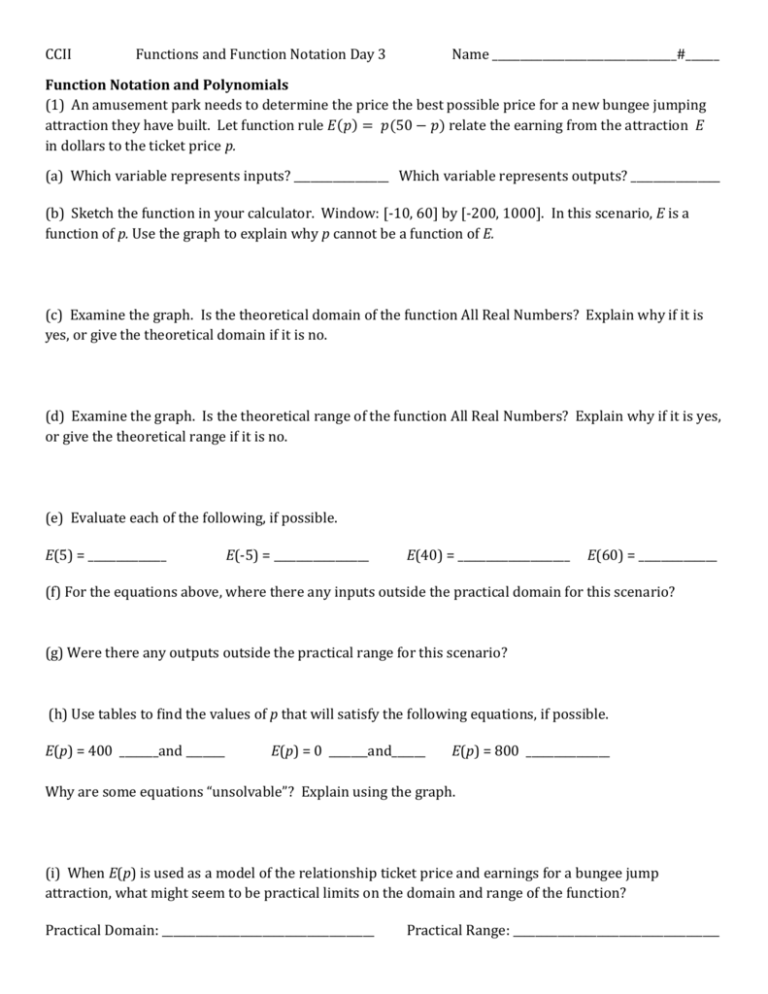
CCII Functions and Function Notation Day 3 Name _________________________________#______ Function Notation and Polynomials (1) An amusement park needs to determine the price the best possible price for a new bungee jumping attraction they have built. Let function rule 𝐸(𝑝) = 𝑝(50 − 𝑝) relate the earning from the attraction E in dollars to the ticket price p. (a) Which variable represents inputs? _________________ Which variable represents outputs? ________________ (b) Sketch the function in your calculator. Window: [-10, 60] by [-200, 1000]. In this scenario, E is a function of p. Use the graph to explain why p cannot be a function of E. (c) Examine the graph. Is the theoretical domain of the function All Real Numbers? Explain why if it is yes, or give the theoretical domain if it is no. (d) Examine the graph. Is the theoretical range of the function All Real Numbers? Explain why if it is yes, or give the theoretical range if it is no. (e) Evaluate each of the following, if possible. E(5) = ______________ E(-5) = _________________ E(40) = ____________________ E(60) = ______________ (f) For the equations above, where there any inputs outside the practical domain for this scenario? (g) Were there any outputs outside the practical range for this scenario? (h) Use tables to find the values of p that will satisfy the following equations, if possible. E(p) = 400 _______and _______ E(p) = 0 _______and______ E(p) = 800 _______________ Why are some equations “unsolvable”? Explain using the graph. (i) When E(p) is used as a model of the relationship ticket price and earnings for a bungee jump attraction, what might seem to be practical limits on the domain and range of the function? Practical Domain: ______________________________________ Practical Range: _____________________________________ (2) Each graph shown is either a function or not. If it is, explain why. If it is not, explain why. (a) (b) (c) (d) (3) Graph each polynomial function. Determine the theoretical domain and range for each. (a) 𝑓(𝑥) = 𝑥 3 − 𝑥 + 1 (b) 𝑓(𝑥) = 𝑥 2 + 3𝑥 + 2 Domain: _______________ Range: ______________ Domain: _______________ Range: ______________ (c) 𝑓(𝑥) = 4 − 3𝑥 + 0.1𝑥 5 (d) 𝑓(𝑥) = 8 − 𝑥 4 Domain: _______________ Range: ______________ Domain: _______________ Range: ______________ (e) 𝑓(𝑥) = 0.5𝑥(𝑥 + 5)(𝑥 − 1) Domain: _______________ Range: ______________ (f) 𝑓(𝑥) = −0.7(𝑥 + 1)(𝑥 − 4) Domain: _______________ Range: ______________ (4) What is true about the theoretical domain for any polynomial function? (5) What is true about the theoretical range for polynomial functions of odd degree? (6) What is true about the theoretical range for polynomial functions of even degree?

